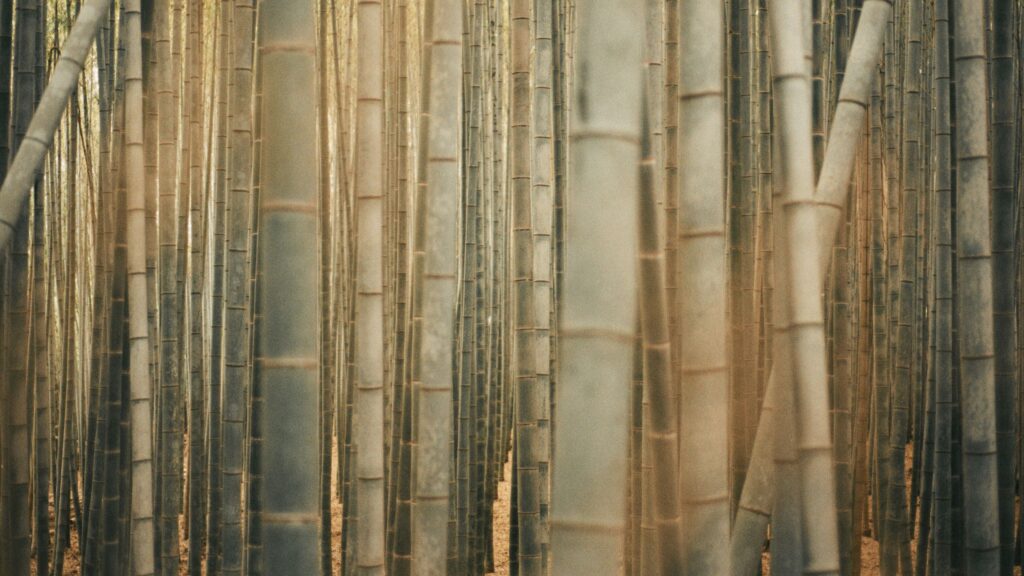Architecture is one of the most significant human milestones and is responsible for the growth and sustainability of civilisation. Over the years, the buildings have undergone a wide variety of designs, structures and materials used. However, there is one material that has left a significant mark on civilisation, and it is bamboo. Once a lost art, the modern world has seen a growth of bamboo architecture because of its great benefits. So, let’s learn why the use of bamboo for architecture is still taking place in 2025.
A Historical Perspective on Bamboo Architecture
The use of bamboo is dominant across Asia, Africa, and even Latin America. You can find various structures across the world made from bamboo, which are remarkable examples of architecture. And even today, there are places in the world that use bamboo not only for architecture but also for a lot of different purposes.
- Temples.
- Houses.
- Bridges.
- Community structures.
Using Bamboo in the Age of Sustainability
The use of modern materials has raised a lot of climate concerns in a world that aims for carbon-neutral construction. In the midst of all this, bamboo architecture is inspiring many designers to use it as a renewable alternative to hardwood or even steel. On top of that, there is a shift in global policies that mandate the use of some percentage of bamboo in building materials. As a result, you can find bamboo more in modern structures.
- Eco-resorts.
- Green offices.
- Public pavilions.
The Science Behind Bamboo Architecture
Bamboo is one of the longest and strongest species of plants that can grow at a rapid rate. In addition to its spectacular growth, bamboo has one of the best tensile strengths and flexibility among different materials, making it earthquake-resistant as well. However, one major drawback of using bamboo is its resistance to pests and weather. Thanks to modern advancements in treatment, the problem of pests is also under control in some species.
Modern Innovations in Bamboo Architecture
Using bamboo alone is not the key to building beautiful and practical infrastructure. That’s where there’s a need for blending modern tools in bamboo architecture. The designers can mix it with glass, steel and even concrete. This will not only increase its life but also build a hybrid architecture that is better than the existing ones.
The Fanciness of Bamboo Architecture in Design
The appeal of using bamboo is the rise of minimalism and biophilic design. These are the two parameters that make bamboo a popular choice for construction and interior design. Furthermore, these are used in flooring, furniture, partitions and have several decorative elements for our building.
- Luxury resorts.
- Restaurants.
- Boutique architecture.
Bamboo Architecture and Urbanisation
There is a way to employ bamboo for affordable housing projects. It’s disaster-resistant and has a scalable application for megacities. Thus, there’s a possibility of building an entire smart city using bamboo.
- Bridges.
- Walkways.
- Community spaces.
Global Acceptance for Bamboo Architecture
Many continents have already savoured the use of bamboo in their culture. However, there is an introduction to modern spaces that has a lot of potential for the future. And the interesting thing is that each area has their own interpretation and usage of bamboo in design.
- Asia: Bamboo skyscrapers and sustainable communities.
- Europe: Bamboo pavilions and eco-expos.
- Africa & Latin America: Affordable housing and resilient structures.
Challenges and Criticisms of Bamboo Architecture
Similar to any other material, bamboo is not free from challenges. There are a lot of issues that hinder the usage of bamboo on a large scale. Not only that, there is also a limitation of the supply chain that comes with overharvesting risks. As a result, it’s better to have a balance of tradition with modern construction codes and regulations.
- Fire safety.
- Durability.
- Large-scale industrial use.
The Future of Bamboo Architecture
The future is unpredictable, but there’s a solid case that bamboo architecture might receive wider adoption for sustainable urban planning. It is due to the rise of technologies that are engineered for skyscrapers. So, it’s only a matter of time before we see the use of more bamboo in the places we’re staying.
Final Thoughts On Bamboo Architecture
Bamboo architecture remains a significant part of modern civilisation, with its benefits in various sectors such as temples, houses, bridges, and community structures. In the age of sustainability, bamboo is being used as a renewable alternative to hardwood and steel, and global policies mandate its use in building materials. Finally, bamboo’s strength, flexibility, and tensile strength make it ideal for earthquake resistance and eco-resorts
FAQs
What is bamboo architecture?
The use of bamboo for the construction of buildings and related structures comes under bamboo architecture.
Which airport in India has bamboo use?
There is a bamboo garden in the Kempegowda International Airport, Bengaluru.
What are the disadvantages of bamboo construction?
The bamboo is prone to moisture and related damage, making it less durable than other heavy substances.
Which city is famous for bamboo?
India is the second largest producer of bamboo, and West Bengal is famous for bamboo crafts and arts.
Which state in India has bamboo houses?
The majority of Northeastern states in India employ bamboo for building their homes.
Which Indian state is called the bamboo Queen?
Mizoram.

